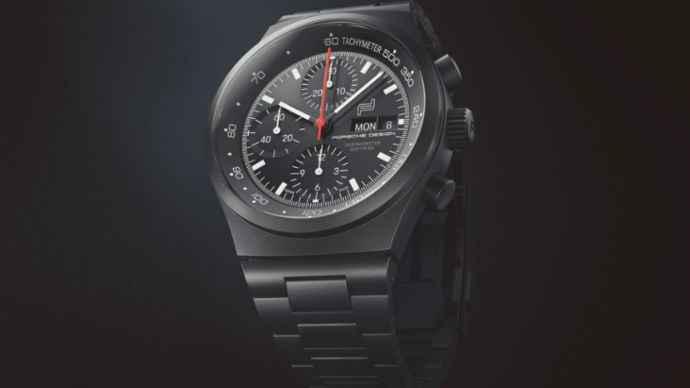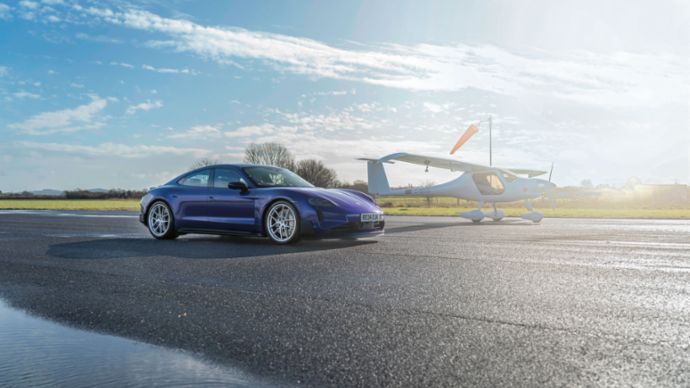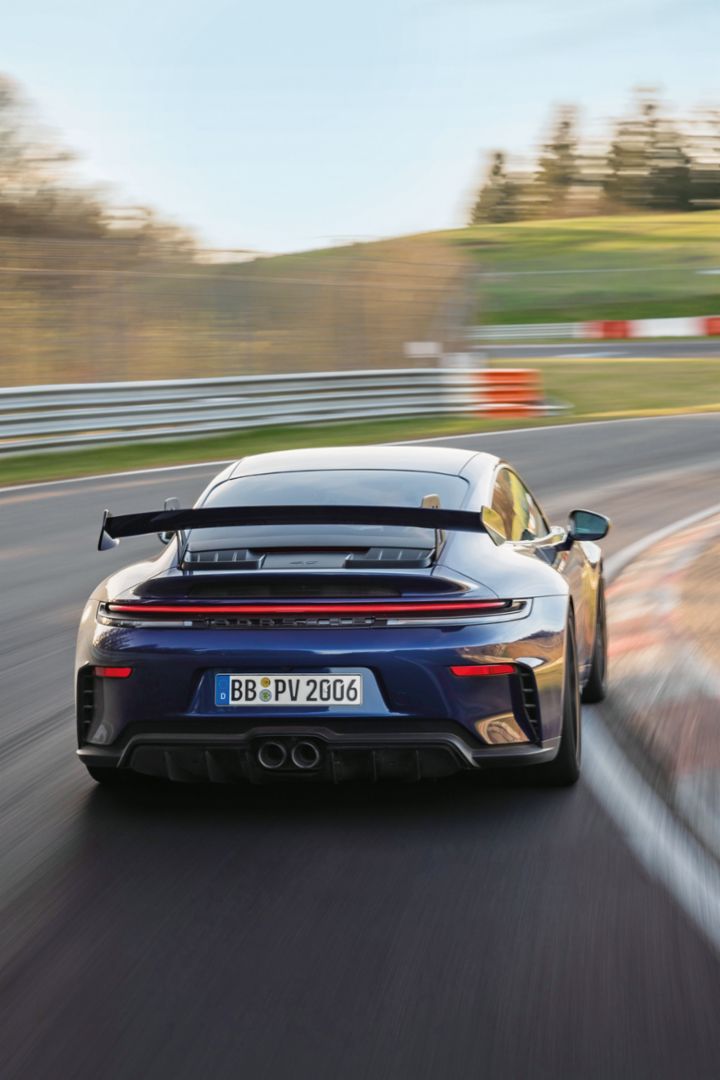Charging a Term
When Porsche unveiled the world’s first production sports car with a turbo engine in 1974, the automotive world changed overnight. Over the past 50 years, the term “turbo” has undergone an exciting transformation: from the technology in the traditional sense to the “Turbo-look” with bulky enlargements and the protruding rear spoiler. While not featured in the model name, the 911 GT2 and the more recent 718 and 911 Carrera models are turbocharged, too. Ultimately, “Turbo” has become a brand name for the top version of the all-electric sports cars.

#1 Big Bang – the Technology
It all began with the unveiling of the Porsche 911 Turbo 3.0 (above) in Paris in 1974. Thanks to turbocharging, its 3.0-liter six-cylinder boxer engine developed an impressive 191 kW (260 PS) for models in Europe – a luxurious bundle of power with driving performances that had been inconceivable in a road-legal production model until then. Turbo has since become an integral part of the Porsche universe. Every generation of the 911 top model drives more powerfully, faster, more efficiently, and more precisely. But there is by no means a turbo monoculture. There has been a tradition at Porsche since 1978 (model year 1979) of crowning an existing successful model with a Turbo version – irrespective of whether its engine is in the rear or up front. That year, Porsche presented the 924 Turbo as the product line’s new top model. A four-cylinder engine under the hood, transmission in the rear (transaxle principle), and pop-up headlights make up the basic models. Four rectangular cooling air openings at the front and optional two-tone livery in keeping with the times mark the difference. The 944 Turbo (top) followed in 1985 and was positioned by Porsche as a comfortable travel sports car which combined the transaxle benefits of versatile space usage and even weight distribution with advanced turbo technology.

#2 It Simply Looks Turbo …
Porsche drew on the popular hallmarks of the 911 Turbo and rolled out an extremely neat combination in 1983 with the G-Series Carrera 3.2 debuted in 1973. Upon request, this 911 can pack the familiar six-cylinder naturally aspirated boxer engine of the basic version into the wider Turbo body (optional extra code M491). The brilliant rear spoiler of the 911 Turbo is also available upon request. The sports car was equipped with the braking system carried over from the 911 Turbo as well as its firmer suspension. These Turbo-look models were offered for the Coupé, Targa, Cabriolet, and the Speedster special model (above) (1983 to 1989). This recipe for success was revived in 1992 and 1993 for the Cabriolet and the 911 Speedster (964), as well as for the coveted 30 Years 911 special model of the Carrera Coupé. Turbo-like bodies also remained popular in more recent 911 generations, but the official label “Turbo-look” went out of fashion.
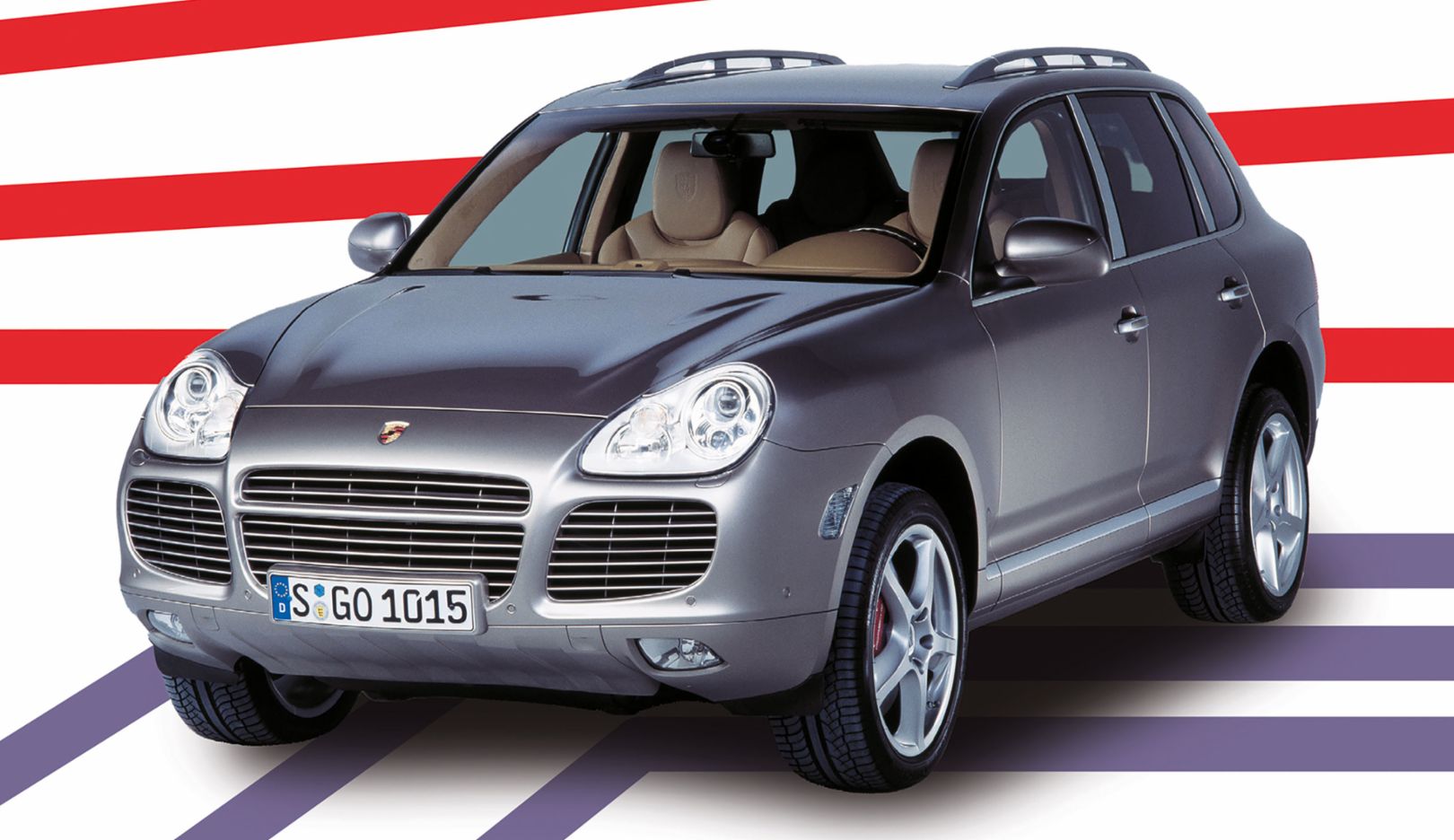
#3 Turbo with Four Doors
A new era began in 2002 with the all-wheel Porsche Cayenne model (above): this was the sports car manufacturer’s first production four-door vehicle with five seats. The top Turbo version with a supercharged V8 engine that delivered 331 kW (450 PS) had an accentuated sporty appearance. The latest-generation Cayenne Turbo E-Hybrid boasts system performance of 544 kW (739 PS; Cayenne Turbo E-Hybrid SUV: Fuel consumption* combined (WLTP) 5.3 – 4.8 l/100 km, Fuel consumption with depleted battery combined 11.9 – 11.3 l/100 km, Electric power consumption* combined (WLTP) 20.5 – 20.0 kWh/100 km, CO₂ emissions* combined (WLTP) 119 – 108 g/km, CO₂ class weighted combined D – C , CO₂ class with depleted battery G ). In the Panamera first unveiled in 2009, Turbo was once again a synonym for the top version. Two different V8 engines, each with two turbochargers and intercoolers, boasted 368 kW (500 PS) and 405 kW (550 PS) respectively, combined with all-wheel drive and optional ceramic brake discs. In the latest, third model generation, the Panamera Turbo E-Hybrid top model develops a system performance of 500 kW (680 PS; Panamera Turbo E-Hybrid: Fuel consumption* combined (WLTP) 4.4 – 3.6 l/100 km, Fuel consumption with depleted battery combined 11.0 – 10.1 l/100 km, Electric power consumption* combined (WLTP) 19.9 – 18.8 kWh/100 km, CO₂ emissions* combined (WLTP) 99 – 81 g/km, CO₂ class weighted combined C – B , CO₂ class with depleted battery G ). Since 2019, six years after the world premiere of the Macan, there has been a Turbo version as the top model in this popular product line, too. The V6 biturbo engine of the sporty SUV delivers power of 324 kW (440 PS).
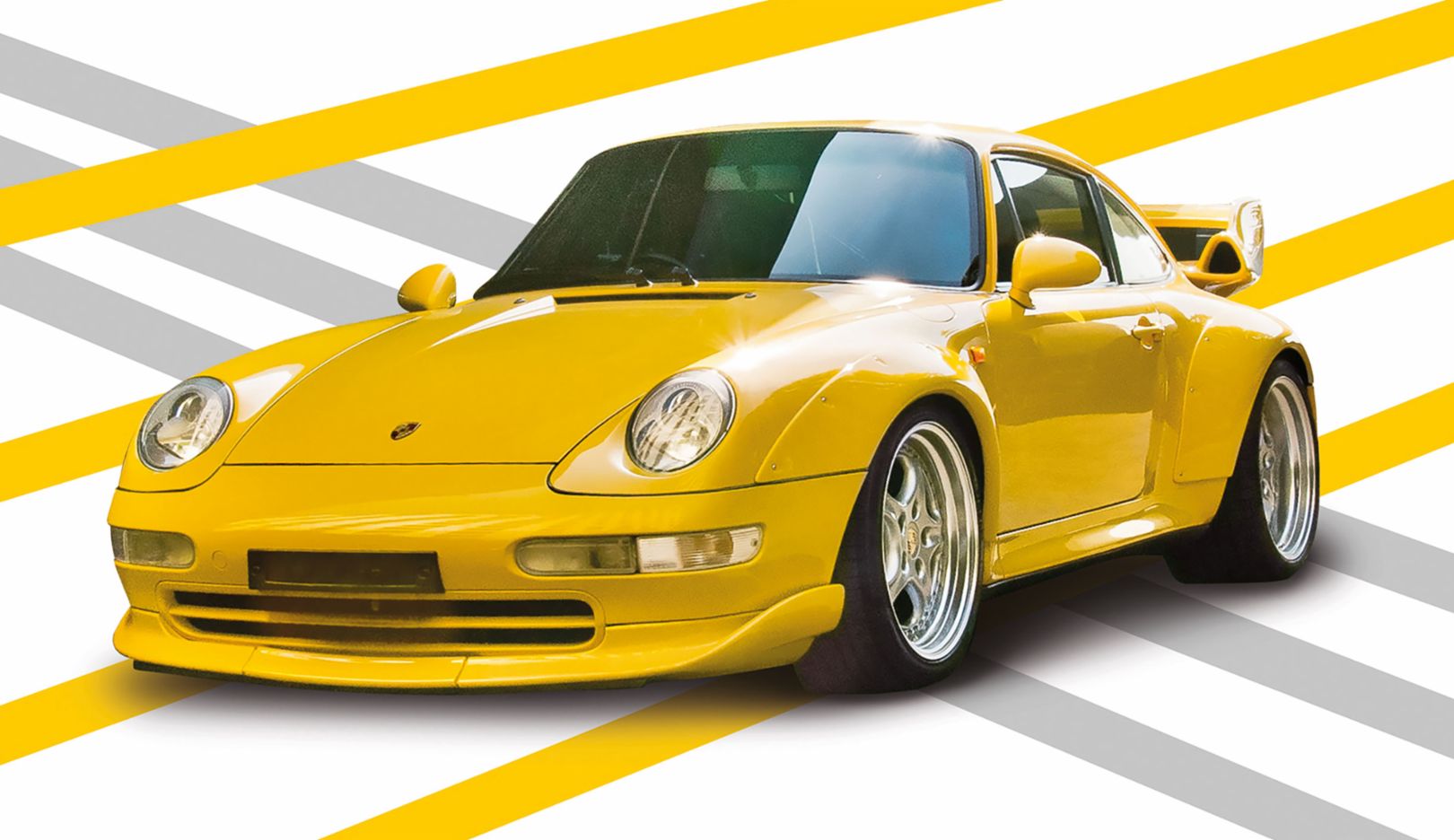
#4 Turbocharging – More Torque
Porsche continued another tradition in 1994 with the 911 GT2 (993) (above). The vehicle making up to 430 PS with a 3.6-liter twin-turbo boxer engine is a road-legal GT race car developed and built by the Porsche Motorsport department at the Weissach Development Center. “Ready to race” was the company’s claim. From model year 2007, Porsche also offered a road-ready race car like this in the sixth generation of the 911 (997). The six-cylinder boxer engine of the GT2 RS was supplied with air by two exhaust air turbochargers with variable turbine geometry (VTG), as were subsequently the GT2 RS models of the seventh 911 generation. To achieve a significant performance increase with smaller displacement, from the 2015 model year, Porsche opted for an entirely new generation of engines with biturbo charging in the six-cylinder 911 Carrera and Carrera S (991). Also for model year 2016, the four-cylinder models in the new generation of the 718 Boxster likewise acquired this technology. The turbocharging resulted in a noticeable increase in torque.

#5 Turbo – Charged with Anticipation
Porsche moved into the battery electric age in 2019 with the four-door Taycan. The Turbo and Turbo S versions of the Taycan were the electric sports car’s top-of-the-range engine versions. Here, “Turbo” stands for the most powerful versions rather than for a technology. And in 2024, the new all-electric generation of the Macan (above) will be offered as a Turbo, too. This version will boast power of up to 470 kW (639 PS; Macan Turbo: Electric power consumption* combined (WLTP) 20.7 – 18.4 kWh/100 km, CO₂ emissions* combined (WLTP) 0 g/km, CO₂ class A ). At the same time, two even more powerful versions are being added to the array of Turbo Taycan vehicles in the latest facelift: the Taycan Turbo GT and the Taycan Turbo GT with Weissach Package. Both can briefly produce up to 815 kW (1,108 PS; Taycan Turbo GT: Electric power consumption* combined (WLTP) 21.2 – 20.5 kWh/100 km, CO₂ emissions* combined (WLTP) 0 g/km, CO₂ class A ; Taycan Turbo GT with Weissach package: Electric power consumption* combined (WLTP) 20.8 – 20.6 kWh/100 km, CO₂ emissions* combined (WLTP) 0 g/km, CO₂ class A ). These are the most powerful Porsche production models ever built – more than four times as strong as the original 911 Turbo of 1974.
Anniversary
Under the title “Beyond Performance – 50 Years of Porsche Turbo,” the Porsche Museum in Stuttgart will look back on five decades of turbo technology. The special exhibition will take place from July 30, 2024, to January 12, 2025.
Consumption data
911 GT3
Cayenne Turbo E-Hybrid SUV
-
5.3 – 4.8 l/100 km
-
11.9 – 11.3 l/100 km
-
20.5 – 20.0 kWh/100 km
-
119 – 108 g/km
-
D – C Class
-
G Class
Macan Turbo
-
20.7 – 18.4 kWh/100 km
-
0 g/km
-
A Class
Panamera Turbo E-Hybrid
-
4.4 – 3.6 l/100 km
-
11.0 – 10.1 l/100 km
-
19.9 – 18.8 kWh/100 km
-
99 – 81 g/km
-
C – B Class
-
G Class
Taycan Turbo GT
-
21.2 – 20.5 kWh/100 km
-
0 g/km
-
A Class
Taycan Turbo GT with Weissach package
-
20.8 – 20.6 kWh/100 km
-
0 g/km
-
A Class


